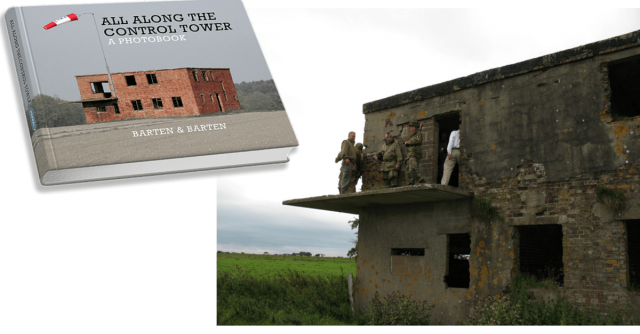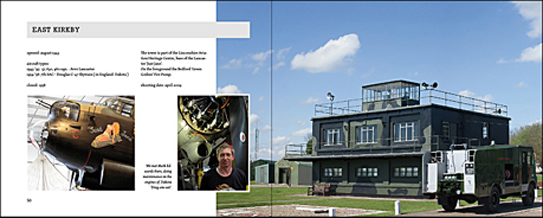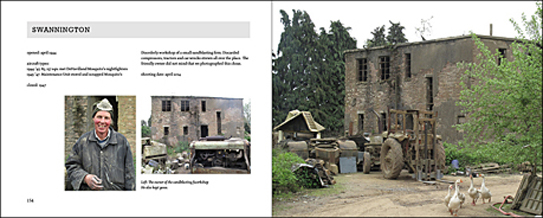The Barten brothers are quite rightly noted for their automotive passions expressed in a series of genuinely lovely books of monochrome nostalgia.
I repeat, this sort of stuff is not an overnight sensation and is the result of years of pounding the highways and byways to find subject matter.
Their books have had a positive influence on me inasmuch as they affirm the good sense in photographing motors or just about anything on a consistent basis regardless of formats. These days I snap old cars or whatever takes my fancy using kits of expensive Nikons or on little point and shoot cameras and more often than not, my phone. There have been many times when I have regretted leaving something to another day only to find it is gone when I returned. In my hometown there was an old street sign with cracked wood and paint flaking off that announced Leading to Dolphinspointing to a close of 1960s yellow brick houses imaginatively named by an urban planner with a penchant for Flipper.It was prime stuff for a photo book of day-to-day eccentricity. But the town council got efficient and changed it for something far less enigmatic before I got my snap. Where am I going with this? I stress the point; if photography is aligned to the things dear to your heart never leave important moments to another day.
This latest book from Narwal is all about important moments. I have images of Theo and Frans chugging around Britain in a camper van visiting places of interest to them and this is pretty much supported by the fact you can be literally anywhere remote or baffling in Britain on high days and holidays and you will always see at least one Dutch registered car. I was once on a grim beach enduring a ‘summer’ hailstorm high up in the east of Scotland thinking no other idiot will be here and yep, there were the Dutch in their VW.
Getting on message for a moment, this book represents a more recent development in the Barten brothers thinking. They have visited fifty odd control towers on former World War II aerodromes in Britain and photographed them in their modern state. For the majority this is easily summed up as decline, but quite a few have found new uses as homes and workshops while some are museums. The authors rightly recognise that while World War II architecture is immensely significant in itself and the need to preserve any of it has not had anything like a priority status. Wartime aerodromes were often built on compulsorily acquired farmland and once the planes left the original owners were only too glad to sweep away the vestiges of any military past.
The effect of this is clear to see in the extremely pleasant photography executed in this book and I agree with the authors that the ghostly remnants of buildings are much more attractive than revamped or restored examples. I am, however, pleased to see that the authors love of anything with an engine in it comes to the surface as often as possible with the appearance of planes, cars and trucks. It’s also nice to see the warmth shown towards any control towers that are now working buildings once more. They have a new life and purpose won for them by the previous occupiers.
Not all the control towers in this book were on bomber stations but the authors are aware that for all the sacrifice in life and treasure the great offensive expended by Bomber Command, the unease of the post war establishment in the face of a stark appreciation of what had been achieved consigned that immense effort to the shadows. Only relatively recently has a fitting monument to 55,000 aircrew who died and the tens of thousands of others who faded away during the intervening years been unveiled in London.It is magnificent and better late than never but there is something altogether simple and yet entirely more real about the remnants of the aerodromes the bombers flew from. This applies in equal measure to former homes of the USAAF.
I have visited some of the control towers seen in the book and there are a few othersI am surprised not to see included, but there is only so much time available to do these things. I am always happy to rekindle memories of the glorious Operation Bolero event of 2007 when my colleagues Jack, Joris and I were in a convoy of wartime MVs visiting East Anglian aerodromes of the USAAF.
So the likes of Thorpe Abbots and Parham will always have a special connection.
As usual with the Bartens the photography is first rate and the use of satellite imagery to show complete airfields as they look today adds a fascinating dimension. The captioning is a hoot and broad smiles are guaranteed. There is no question that old aerodromes are places made to be explored and this book really encourages that idea – ignoring the small matter of trespass! The allusion in the title to Dylan and Hendrix is something else to enjoy. I imagine they dreamed that one up in a bar somewhere.
I have no idea what else the Barten brothers have in their armoury but I am happy to encourage them to keep going. I think they were looking at some kind of crowd funding to help make this book a reality but whether it was necessary in the end I do not know. What I can say is this is a fascinating, affectionate and very pleasing book and while it is miles away from previous efforts in terms of imagery, all the gentle passion and warmth of the vehicle books is present. What Frans and Theo have in abundance is style and you really can’t buy it; you have to have it in you from the very beginning.
Reviewed by Mark Barnes for War History Online
ALL ALONG THE CONTROL TOWER
A Photobook
By FransBarten& Theo Barten
Narwal
ISBN:978-90-817110-6-7




